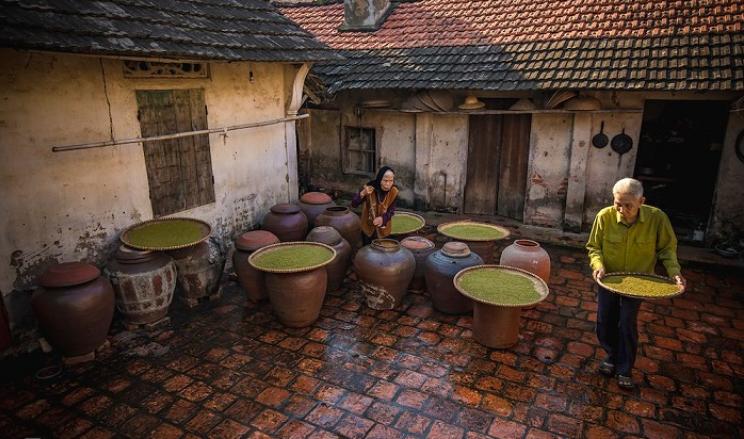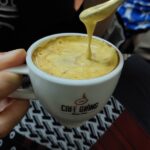Duong Lam Ancient Village is no longer a strange place, the village is never empty of visitors. The village is famous by the attraction of hundred-year-old houses and winding roads in the village. The unique atmosphere, combined with the cuisine here, is also the reason why families always want to bring their children here at any free time.
Duong Lam Ancient Village is located in Son Tay Town, Ha Noi, only 44 kilometers away from the city center. It is right next to the intersection between Ho Chi Minh Road and National Road 32, which makes it very convenient for tourists to visit.
During the journey to explore Duong Lam, visitors should experience the unique cuisine of this ancient village. Dishes are for the whole family to enjoy while parents tell their children stories from the distant past.
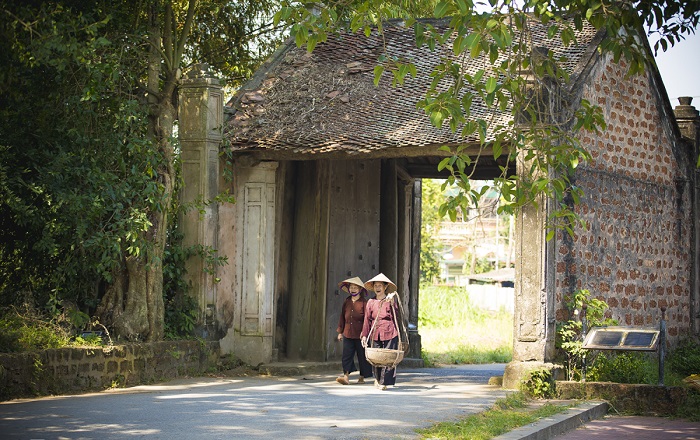
Roasted meat
This dish is famous for its elaborate way of making. The process of making a batch of roasted meat can take up to 6 hours. From the meat selection stage, Duong Lam people choose delicious, fresh pork belly with thick skin but not too much fat. The meat will be marinated with spices, in addition to pepper, fresh onions, salt and fish sauce, there are also hung liu (spice mixture of four or five spices) and guava leaves. And guava leaves are considered the decisive ingredient for the flavour of this dish. Guava leaves must be young, chopped, and marinated with meat for about 1 hour. The leaves will be stuffed into the meat before roasting. When the meat is soaked, roll it up on a bamboo pole, lined with banana leaves.
There are their own standards to roast the meat. People must raise the piece of meat about 50 cm above the fire below. Wait until the meat has firmed up a bit before lowering the height closer to the fire, about 30cm. The cook must be patient and careful to keep the right distance and let the meat cook slowly. When the meat tightens and the fat drains, lower the roasting lever further to make the meat have an eye-catching colour.
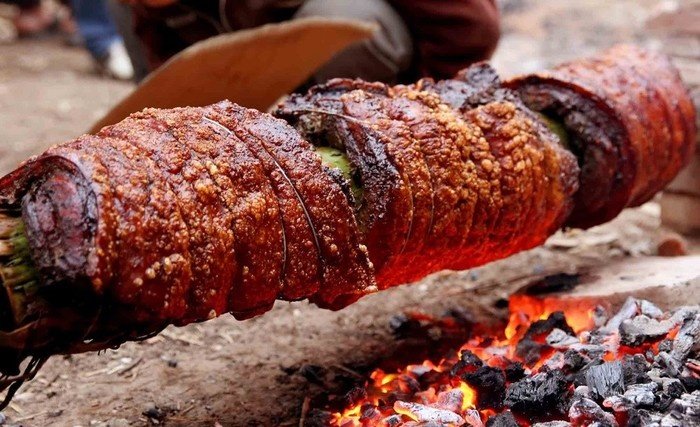
A successfully roasted meat, the skin must be crispy and puffy. Use a bamboo skewer to poke holes in the skin until it makes a popping sound. The meat will be coated with a thin layer of honey to increase its deliciousness when the meat is cooked.
Steamed Mia Chicken
In Duong Lam, there is a breed of chicken named after the old name of the village: Mia Chicken. In the past, this breed of chicken was only used to present to the king or on important occasions such as holidays, New Year, and offering incense at village festivals, symbolising prosperity and fullness. The chickens are raised on corn, rice, and cassava, so although they are small and weigh only about 2kg, their meat is very firm. When they are young, their skin is red, but when they reach a large weight, their skin will turn yellow.
Today, this precious breed of chicken has been bred and served to tourists visiting the ancient village. Mia chicken is often steamed to retain its delicious, rich flavour. However, if you want to enjoy it properly, you have to wait until the steamed chicken has cooled before you can feel the sweet and fragrant flavour that has penetrated into each fibre of the chicken meat.
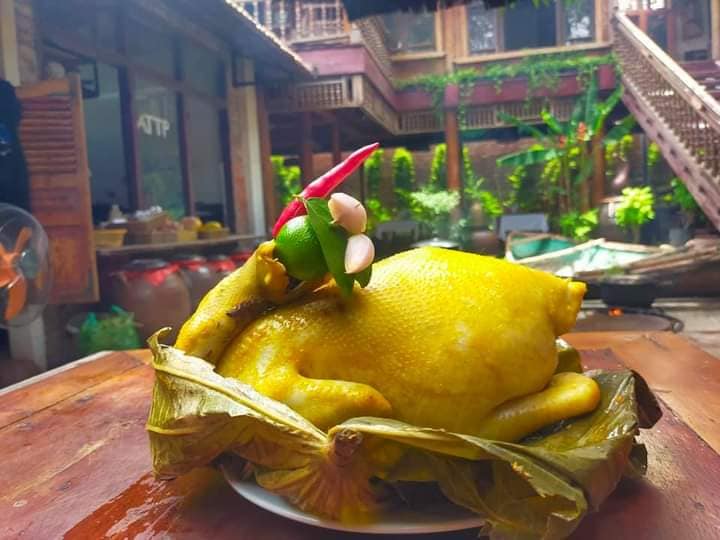
Chè Lam and leaf cakes
In the suburban areas of Ha Noi, there are many places that make chè lam (similar to a type of cake), but eating chè lam made by the people of the ancient village of Duong Lam still has its own flavour. Chè lam here is sticky, has the aroma of roasted glutinous rice flour, ginger, and the sweetness of molasses and malt.
There are production facilities located in hundred-year-old houses here, visitors can visit and see firsthand the process of making chè lam. Or at the water stalls around the village, there are also women who often display chè lam in a large block on a tray. Customers will cut it wherever they buy it.
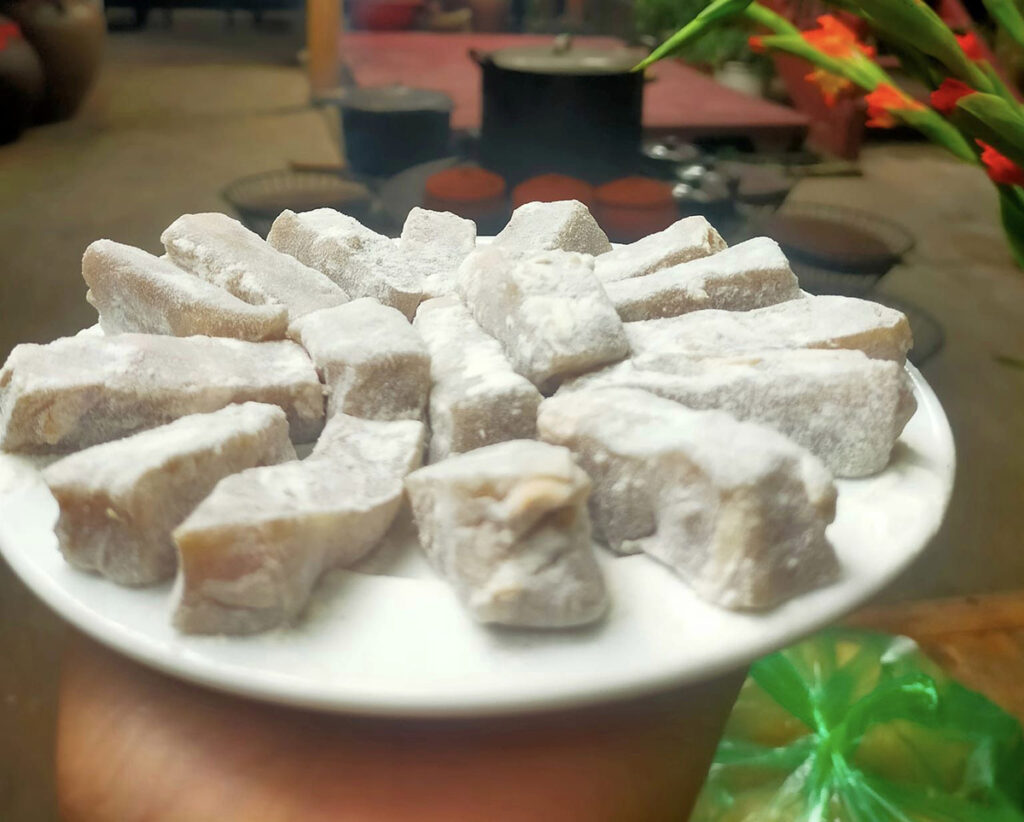
Duong Lam has various traditional leaf cakes such as: banh te, banh nep (sticky rice cake), banh gai, banh gio, banh duc… Visitors should also try when coming to village.
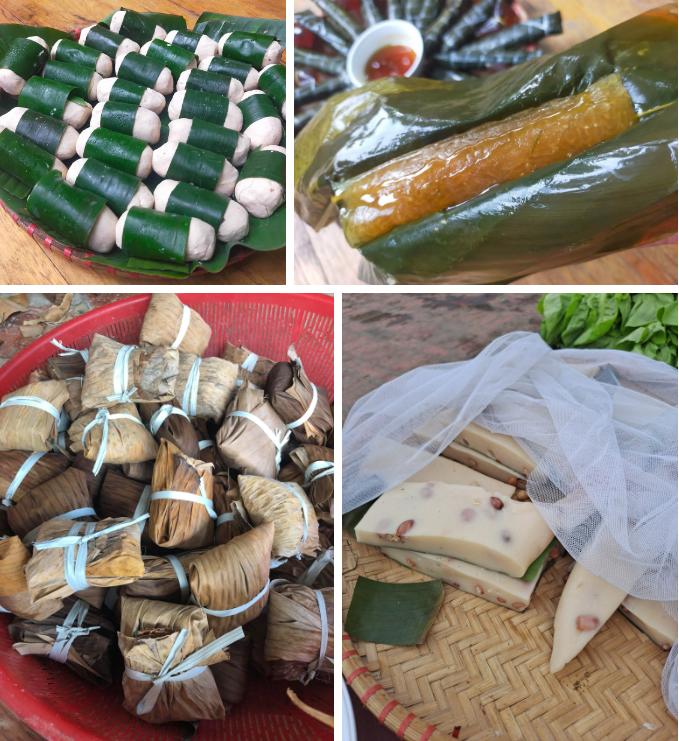
Tương nếp
On the village road, passing by houses, especially in Mong Phu village, visitors can see big jars filling a large yard. People here have a traditional craft of making tương (soy sauce) that is hundreds of years old. The soy sauce in Duong Lam has a sweet, fragrant, and unforgettable taste, not to be confused with anywhere else. Many dishes in the ancient village such as boiled water spinach, buffalo meat, beef… when dipped in soy sauce from this place, the appeal is doubled.
In addition, Duong Lam people also have fish stewed in soy sauce, pickled cà (solanum macrocarpon) in soy sauce, and pickled radish in soy sauce
